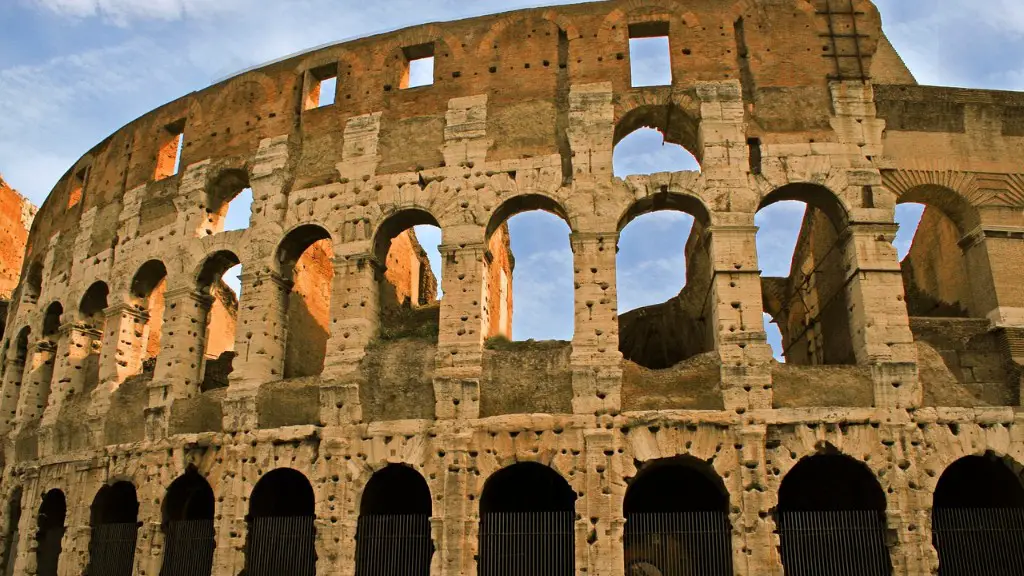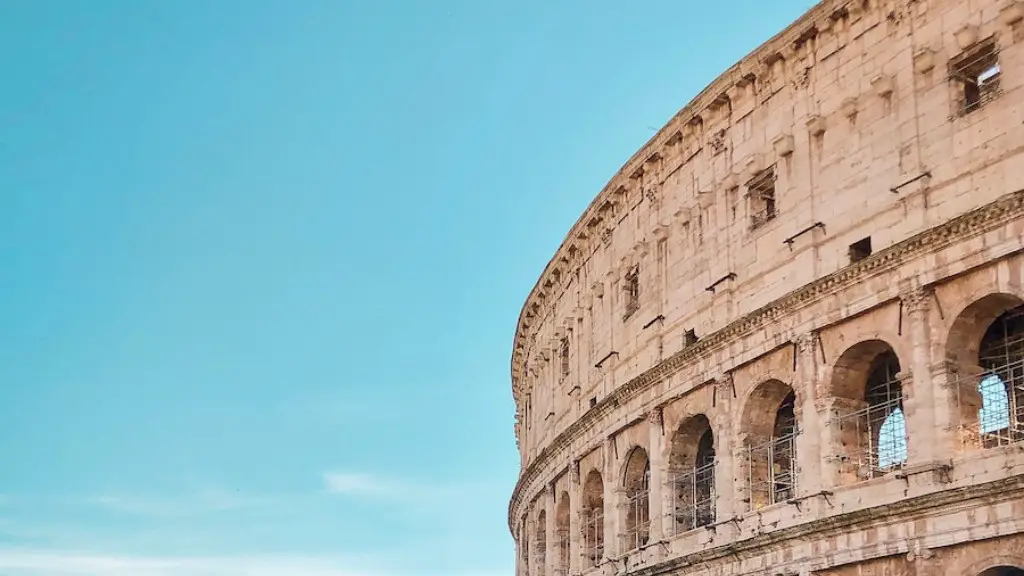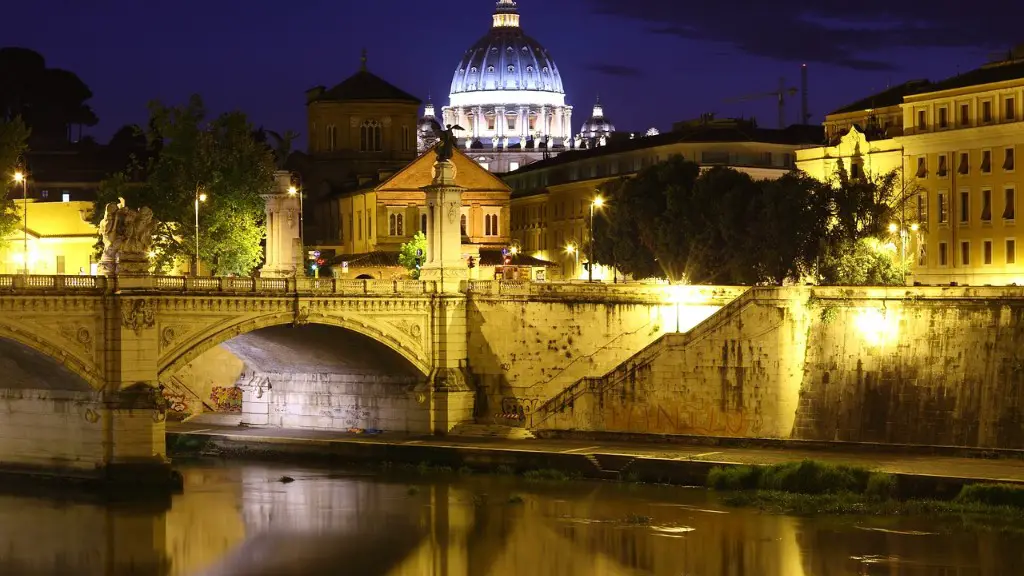The days of ancient Rome were a time of legendary magnificence, when magnificent temples and public monuments dominated the skyline. But what was the style of ancient Rome? What was its history and developments, and how do we recognise it today?
The style of Ancient Rome was heavily influenced by the architecture of the Etruscans, the native people of central Italy, who introduced their methods of stone construction to the Romans. The style was kept in place by the masterful use of concrete. Developed by the Roman Empire over two centuries of development, concrete allowed engineers to rapidly create expansive structures that controlled the flow of water, streets and aqueducts, while providing adequate accommodation and luxurious amenities.
Roman architecture often featured grand, symmetrical and finely decorated stone facades, with particularly stunning examples being the Pantheon in Rome, the Colosseum, and the Baths of Caracalla. Not only did these structures boast impressive shapes and patterns, but their interior decoration was just as elaborate and breathtaking.
The technical advances in architecture developed by the Romans paved the way for the extraordinary accomplishments of the Renaissance, thanks to many of its innovations being preserved in libraries and archives. By the Middle Ages, the style was immensely popular throughout the Mediterranean region, bringing together the ingenuity of Etrucan engineering with the grandiosity of Gothic and Byzantine styles.
Today, Roman architecture continues to be emulated and celebrated in many designs. Its refined and powerful style can be seen in modern towers, palaces, and public monuments, many of which were inspired by the same design themes found in Ancient Rome. Furthermore, many historic structures have been carefully restored, allowing us to experience first-hand the magnificent style of the empire.
Advancements in Structural Design
The style of ancient Rome was also characterized by incredible innovations in structural design. Concrete, for instance, allowed for a variety of shapes to be used when building structures, compared to the more limited options offered by stone and wood. One of the most iconic Roman structures, the Pantheon, was created in this manner. The intricate dome, composed of a combination of concrete and stone, is still seen as a feat of engineering.
In addition, the Romans used glass and metal to create demanding designs. Roman engineers would also incorporate arches and vaults as a way to make the most of the materials available. Lastly, the Romans used pillars and capitals in the design of columns and walls to obtain a graceful and uniform result.
Use of Color and Decoration
The style of ancient Rome wasn’t only recognized by its structural designs, but also by the luxurious decorations and colors used in the dwellings. Backgrounds were often decorated with bright and vivid colors, while the walls were decorated with frescoes and paintings as a way to give life to the structures. Furthermore, intricate gold and silver mosaics were used to decorate fountains, floors and pathways.
Archaeologists have also discovered the use of brightly colored terracotta that decorated windowsills and other exterior decorations. Even these utilised the signature Roman style, which emphasized symmetry, balance, and harmony.
Use of Columns and arches in Ancient Rome
In addition to its decorative elements, the Roman style is also known for its use of columns and arches. Columns were often used to support the ceilings of rooms, while arches allowed architects to make passageways between buildings and to bridge long distances. Arches also served as a way to create covered spaces, like the ones found in Roman baths and basilicas.
The use of columns and arches was so commonplace that it soon became a defining element in Roman architecture. Columns, for instance, were used to adorn and emphasize the entrance to public buildings or private homes. As for arches, their form was often repeated in monuments, temples and other structures.
Innovative Sewer Systems
One of the most remarkable examples of Roman engineering is the network of sewers and aqueducts that were constructed in order to provide the city of Rome with clean water. This network of structures also served to carry away waste, making it hygienic and safe for its residents. In addition, the materials used in construction allowed the engineering of structures that are still standing today. The aqueduct of Segovia in Spain, for instance, dates back to the first century A.D.
On top of that, the Romans had a rather sophisticated plumbing system. Lead pipes were commonly used to carry water from its source to different locations within the city. This system allowed the rich to have running water from taps installed in their homes.
Conclusion
The style of Ancient Rome was characterized by extravagant decoration and iconic architectural concepts, helping to create a lushly furnished and visually striking environment. Its innovative use of stone and concrete, combined with tasteful additions such as columns, arches and mosaics, have made this style one of the most influential in the world. Modern architects are inspired by Roman designs, and the legacy of this style lives on in many buildings around the world.



